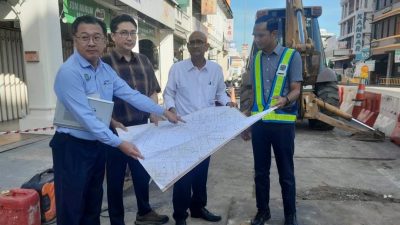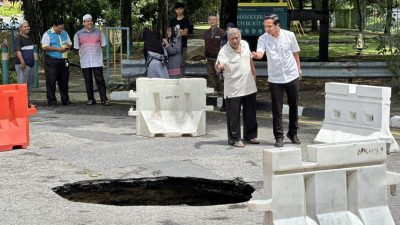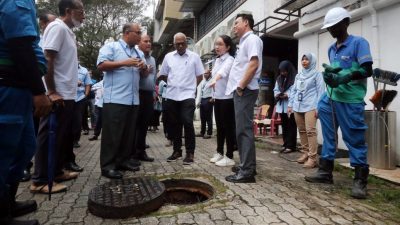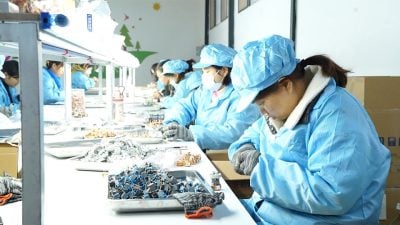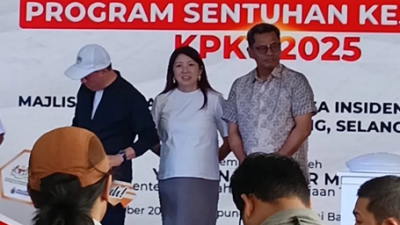The less we use, the less domestic wastewater will be generated, and this will help lighten the enormous burden on our environment and public health.
The sewerage tariffs that have remained the same for the past 28 years will be raised soon.
Indah Water Konsortium (IWK) has announced that the sewerage charges for domestic users in Peninsular Malaysia and Labuan will be raised by RM5 to RM8 for individual septic tanks with effect from October 1, and by RM2 for connected sewerage services from January 1.
According to the sewerage service provider, the company has not revised its tariffs since it took over in 1994. And given the fact that the charges are lower than the sewerage treatment cost, the cabinet decided in its April 20 meeting to raise the tariffs for Peninsular Malaysia and Labuan.
Over the past 28 years, indeed we have seen remarkable improvement in public sewerage infrastructure in West Malaysia and Labuan, including increasing the length of underground sewerage pipes by eight times to 22,820 km, the number of public sewage treatment plants by seven times to 7,347, and sewage pumping stations by 19 times to 1,398.
From these numbers, we can imagine that prior to 1994, the way we handled sewage must have been channeling the wastewater from the drains directly into the rivers before pouring into the sea.
We have no way to comprehensively evaluate IWK’s sewerage treatment efficiency, but we believe with the vastly improved infrastructure, environmental pollution will be significantly reduced to ensure Malaysians can continue to enjoy a high standard of public hygiene while fulfilling the country’s sustained environment goals.
What IWK is handling daily is not just septic tank sewage but also household wastewater. The more wastewater we create, the bigger the volume that needs to be treated.
According to National Water Service Commission (SPAN) statistics several years ago, each Malaysian household used an average of 211 liters per day, on par with the 210 liters for Beijing, far lower than Taipei’s 333 liters, but almost 1.73 times Germany’s 122 liters!
It is hoped that at the same time we have to pay more for sewerage services, we should be prompted to use water more sparingly while companies should implement wastewater treatment for reuse.

Malaysia boasts an average annual rainfall of 2,500 mm and as such, water scarcity is hardly felt by most Malaysians and we have grown so much accustomed to using water very “generously.”
Meanwhile, elsewhere in the world, about 1.7 billion people or 22% of the global population are struggling with the dilemma of chronic water shortage, while 3.6 billion people or 47% of total population have to live with inadequate water supply for at least one month each year.
Neighboring Singapore is among countries that can really feel the preciousness of its water resources. For years an average Singaporean family has been using an average of only about140 liters of water a day, thanks to the government’s unrelenting public education efforts.
The less we use, the less domestic wastewater will be generated, and this will help lighten the enormous burden on our environment and public health.
Although Germany has abundant water resources, the people there have been using water very sparingly due to their strong environment consciousness. The same goes with the Scandinavian countries of Norway, Finland and Sweden.
According to statistics, over 35% of domestic water usage is in the bathrooms. In view of this, people in northern European countries have dumped their bathtubs and are going for special shower heads to save water usage, while toilets come with buttons for large and small flushes. When they brush their teeth or rub the body with soap, the water is normally tapped off first, and this will easily save 66% of water.
These tricks look simple to us, but how many will actually practice them customarily?
Also in Germany, water-saving features have been installed in kitchens and bathrooms. Every apartment or single-family home has rainwater harvesting equipment installed to store rainwater for plant watering and non-drinking uses.
Germany has even mandated rainwater harvesting installation at commercial or residential precincts, and rainwater directly discharged into sewers will be levied 1.84 euros per cubic meter.
The more water we conserve, the less the burden of sewerage treatment. IWK has spent the past 28 years vastly improving the quality of sewerage treatment services in West Malaysia, and the next step is to recycle and reuse of non-potable water.
Additionally, logging and construction activities must be strictly prohibited at catchment areas while the discharge of industrial effluents must be closely regulated.
We still have a very long way to go to protect our planet’s water resources.
ADVERTISEMENT
ADVERTISEMENT






